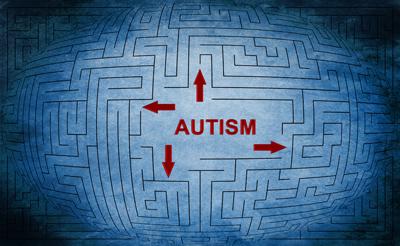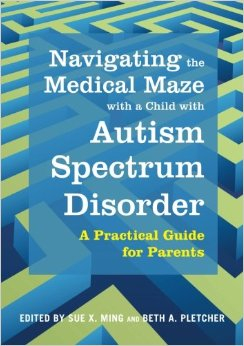Guiding Parents of Autistic Children Through the Medical Maze
A new book by a pediatric neurologist and geneticist uses plain language to help parents of children on the autism spectrum maximize their office visits

‘More than ever, physicians and specialists need parents to be an essential part of the team; without their assistance, treatment might be less effective.’
– Sue Ming
When a child is diagnosed with an autism spectrum disorder, parents often find themselves overwhelmed by the process of working with a team of specialists.
Pediatric neurologist Sue Ming and pediatric geneticist Beth Pletcher, professors at Rutgers New Jersey Medical School, have worked with children with ASD for more than a decade and have seen firsthand the struggles parents face in educating themselves on how to work effectively with the medical community.
So they decided to help – by empowering parents, whom they call the “most critical component in the medical team.”
Their recently published book, Navigating the Medical Maze with a Child with Autism Spectrum Disorder: A Practical Guide for Parents, helps families play an effective and active role in their child’s medical care from diagnosis through early adulthood.
Drawing upon their clinical experience caring for children with spectrum disorders, Ming and Pletcher targeted the guide to parents who want to learn beyond basic information about the host of issues that can result from an ASD diagnosis so that they can be more proactive during medical visits.
“Nationwide, the rate of children with autism has risen to one in 68. More than ever, physicians and specialists need parents to be an essential part of the team; without their assistance, treatment might be less effective,” says Ming. “They live with the child and know how he or she reacts. It is especially important to have parents active in treatment if a child is non-communicative.”
The guide, with 17 chapters written by a variety of specialists such as dentists, geneticists, and child neurologists, helps readers form detailed, pointed questions, reduce their anxieties and be more prepared for appointments with their children’s physicians.
The professors edited the book with language that uses lay descriptions for developmental and medical conditions and has a service-oriented approach, with explanations about common diagnostic tests and tips on managing day-to-day medical and behavioral challenges.
“Parents are at risk of being led down a path that might not be beneficial for their child if they rely on the Internet as a source of education,” says Pletcher. “We worked with a team of specialists to make sure that the topics most relevant to parents were discussed.”

Along the way, Ming and Pletcher realized they were covering subject matter that was not often found in similar guides, such as oral and dental issues, alternative and complementary medicine, and what to consider when enrolling a child in a research trial.
“If you have a child with ASD, it’s not easy to find the most effective approach for treatment since there are so many aspects of this disability. Every child is different; there is no one checklist,” says Catherine Wersinger of Monmouth County, whose teenage son has been Ming’s patient since he was diagnosed at age 2. “This book is an incredible resource for parents of children of any age since it covers whatever a parent might encounter and details red flags that you might not necessarily know are red flags. For example: If your child’s ears are always red, what might that mean?”
Navigating the Medical Maze is also beneficial for professionals who work with children on the autism spectrum – such as physicians, teachers, and therapists – and can help them find resources or understand other aspects of the disorder.
“What makes this book different is that the chapters are written by many specialists,” says Pletcher. “It’s a team effort – very much the model for caring for a child with a complex condition like an ASD.”
For more information, contact Patti Verbanas at 848-932-0551 or patti.verbanas@rutgers.edu